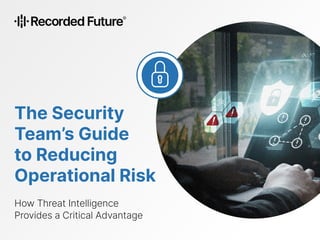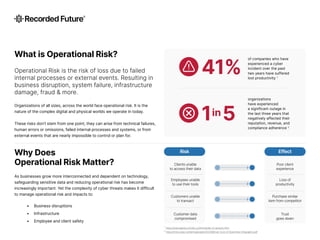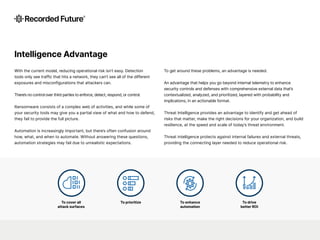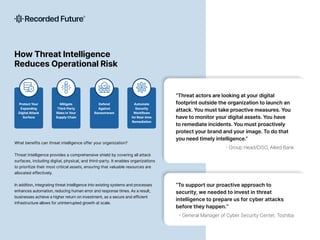The document outlines the necessity of threat intelligence for security teams to reduce operational risks associated with cyber threats and complex infrastructures. It discusses the challenges organizations face, such as business disruptions and third-party vulnerabilities, and emphasizes the importance of proactive measures to strengthen defenses and automate workflows. By leveraging threat intelligence, organizations can enhance visibility, prioritize critical assets, and improve response times to safeguard against evolving threats.










